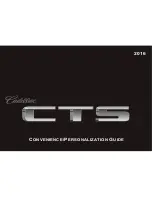
DRIVE (D): This position is for normal driving. If you
need more power for passing, and you’re:
•
Going less than about 35 mph (55 km/h), push your
accelerator pedal about halfway down.
•
Going about 35 mph (55 km/h) or more, push the
accelerator all the way down.
You’ll shift down to the next gear and have more power.
Drive (D) can be used when towing a trailer, carrying
a heavy load, driving on steep hills or for off-road driving.
You may want to shift the transmission to THIRD (3)
or, if necessary, a lower gear selection if the
transmission shifts too often.
Notice: Extended idling for more than five minutes
in DRIVE (D) on vehicles equipped with the Allison
Transmission may cause transmission overheating
and damage. Always put the gearshift lever in
PARK (P) if idle time is longer than five minutes.
If your vehicle is equipped with the Allison
®
Transmission, it will initially attain first range when
DRIVE (D) is selected. As vehicle speed increases, the
transmission will upshift automatically through each
available range up to FIFTH (5). As the vehicle slows,
the transmission will downshift automatically.
THIRD (3): This position is also used for normal driving,
however it offers more power and lower fuel economy
than DRIVE (D).
SECOND (2): This position gives you more power but
lower fuel economy. You can use SECOND (2) on
hills. It can help control your speed as you go down
steep mountain roads, but then you would also want to
use your brakes off and on.
If you manually select SECOND (2) in a light duty
automatic transmission, the transmission will drive in
second gear. You may use this feature for reducing the
speed of the rear wheels when you are trying to start
your vehicle from a stop on slippery road surfaces.
FIRST (1): This position gives you even more power
(but lower fuel economy) than SECOND (2). You
can use it on very steep hills, or in deep snow or mud.
If the selector lever is put in FIRST (1) while the
vehicle is moving forward, the transmission won’t shift
into first gear until the vehicle is going slowly enough.
Notice: Spinning the tires or holding the vehicle in
one place on a hill using only the accelerator
pedal may damage the transmission. If you are
stuck, do not spin the tires. When stopping on a hill,
use the brakes to hold the vehicle in place.
On cold days, approximately 32°F (0°C) or colder, your
transmission is designed to shift differently until the
engine reaches normal operating temperature. This is
intended to improve heater performance.
2-29
Содержание Silverado 2004
Страница 5: ...These are some examples of symbols that may be found on the vehicle v ...
Страница 80: ...United States without Passenger Sensing System Canada with Passenger Sensing System 1 74 ...
Страница 92: ... NOTES 1 86 ...
Страница 167: ... NOTES 3 3 ...
Страница 168: ...Instrument Panel Overview 3 4 ...
Страница 202: ...Canada with Passenger Sensing System Canada without Passenger Sensing System 3 38 ...
Страница 410: ...Engine Compartment Overview When you lift up the hood on the VORTEC 4300 V6 engine you ll see the following 5 14 ...
Страница 414: ...When you lift up the hood on the VORTEC 8100 V8 engine you will see the following 5 18 ...
Страница 490: ...Removing the Spare Tire and Tools Regular Cab and Crew Cab Extended Cab 5 94 ...
Страница 497: ...Front Position 2WD 1500 Series Front Position All Other Models 5 101 ...
Страница 524: ...5 128 ...
Страница 532: ... NOTES 5 136 ...
Страница 550: ...Engine Drive Belt Routing V6 Engines V8 Engines 6 18 ...
Страница 552: ...Maintenance Record cont d Date Odometer Reading Serviced By Maintenance I or Maintenance II Services Performed 6 20 ...
Страница 553: ...Maintenance Record cont d Date Odometer Reading Serviced By Maintenance I or Maintenance II Services Performed 6 21 ...
Страница 554: ...Maintenance Record cont d Date Odometer Reading Serviced By Maintenance I or Maintenance II Services Performed 6 22 ...
















































